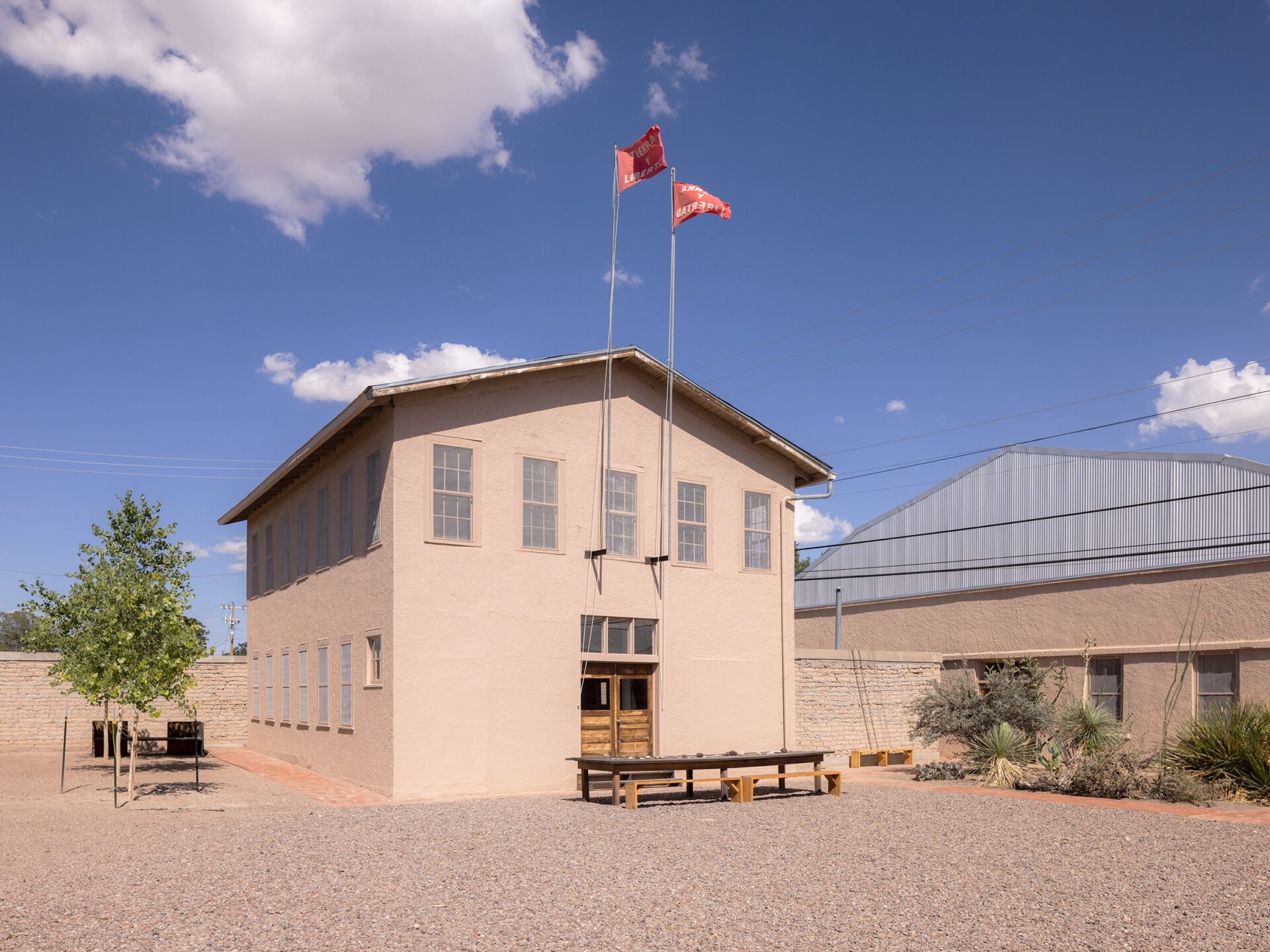Summer 2022
400 West El Paso Street
Marfa, TX

Summer 2022
400 West El Paso Street
Marfa, TX

The Tierra y Libertad flags, by Grant Leuning and Pepe Rojo of the Comité Magonista Tierra y Libertad, were raised at La Mansana de Chinati in Marfa this summer. The Comité Magonista has been conducting a new iteration of the flag’s trajectory, pursuing “pens/hacer,” an aesthetic and political method, a post-signifying intensification of artwork as a complex without origins, and an autonomously-generated repetition of (art)works not created, but provoked and converged into existence, reintroducing the flag to the 21st century borderzone.
Leuning and Rojo describe in the abstract for their essay “Tierra Y Libertad: Autonomous Flag Aesthetics and Pens/Hacer Politics”:
Tierra y Libertad is a series of installations, performances, and publications that are thinking-through-production. The project is the repetition of an historical event. In 1911, the peak of Mexico’s revolutionary moment, an army formed in Los Angeles: a collection of trade unionists, anarcho-communists, immigrant dock workers and indigenous fighters organized by the revolutionary Mexican exile Ricardo Flores Magón. These “Magonistas” crossed the border, capturing Mexicali and Tijuana. There, they raised a flag, white text on red background, it said Tierra y Libertad. A month later, the Magonistas were massacred by the Mexican federal army and the flag was destroyed by the officials of the new post-revolutionary Mexican state.
With a community of hundreds of artists, activists, and academics, the Comité has produced several thousand flags, has paraded, marched, distributed blankets and food, seed-bombed the land, burnt the flag into the beach and produced festivals in Tijuana, Mexico City, Mexicali and San Diego. Through these provocations, the flag has circumscribed a world, distributing the labor of its enactment as a way of defining the modes of relation between flags, marches, events, and the Comité Magonista itself, that entity tasked with the human work of the flag’s instantiation and spread.